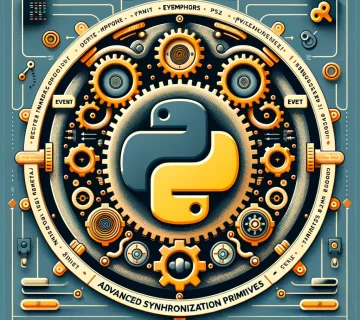Python’s list comprehensions are a favorite among developers for their syntactic clarity and efficiency in creating lists. However, to truly harness the power of this feature, one must venture beyond the basics into the realm of advanced techniques. This post delves into sophisticated list comprehension strategies, including nested list comprehensions and their innovative applications to dictionaries and sets, aiming to elevate your Python coding skills.
The Essence of List Comprehensions
List comprehensions offer a concise way to create lists. The basic syntax is [expression for item in iterable if condition], which transforms into a powerful tool when extended with advanced concepts.
Nested List Comprehensions
Nested list comprehensions are list comprehensions within another list comprehension. They are potent tools for working with multi-dimensional data structures.
Example: Flattening a Matrix
Consider a matrix (a list of lists) that you want to flatten into a single list. A nested list comprehension can accomplish this in a single line:
matrix = [[1, 2, 3], [4, 5, 6], [7, 8, 9]] flattened = [num for row in matrix for num in row] print(flattened) # Output: [1, 2, 3, 4, 5, 6, 7, 8, 9]
Example: Applying a Function to a Matrix
Applying a function, such as squaring each element in a matrix, showcases the elegance of nested list comprehensions:
squared_matrix = [[num**2 for num in row] for row in matrix] print(squared_matrix) # Output: [[1, 4, 9], [16, 25, 36], [49, 64, 81]]
Advanced Filtering
List comprehensions can incorporate multiple if conditions or even nested conditions, enabling sophisticated filtering.
Example: Filtering Odd and Even Numbers
numbers = range(10) odd_even = ["Even" if num % 2 == 0 else "Odd" for num in numbers] print(odd_even) # Output: ['Even', 'Odd', 'Even', 'Odd', ..., 'Even']
Example: Complex Conditions
Combining conditions allows for intricate filtering:
complex_filter = [num for num in range(100) if num % 2 == 0 if num % 5 == 0] print(complex_filter) # Output: [0, 10, 20, 30, ..., 90]
Extending to Dictionaries and Sets
List comprehension concepts are not confined to lists. They can be elegantly applied to dictionaries and sets, offering a unified approach to generating these data structures.
Dictionary Comprehensions
Similar to list comprehensions, dictionary comprehensions provide a concise way to create dictionaries.
squared_dict = {num: num**2 for num in range(5)}
print(squared_dict) # Output: {0: 0, 1: 1, 2: 4, 3: 9, 4: 16}
Set Comprehensions
Set comprehensions follow the same principle, enabling the creation of sets with unique elements.
squared_set = {num**2 for num in [1, 1, 2]}
print(squared_set) # Output: {1, 4}
Practical Applications
Advanced list comprehensions can significantly simplify code involved in data processing tasks, such as parsing and transforming data files, or preprocessing data for machine learning models.
Example: Processing CSV Data
data = ["name,age,city", "Alice,30,New York", "Bob,25,Los Angeles"]
processed_data = [{k: v for k, v in zip(data[0].split(','), line.split(','))} for line in data[1:]]
print(processed_data)
# Output: [{'name': 'Alice', 'age': '30', 'city': 'New York'}, {'name': 'Bob', 'age': '25', 'city': 'Los Angeles'}]
Conclusion
Advanced list comprehensions in Python open up a world of possibilities for writing more expressive, efficient, and readable code. By mastering these techniques, you can tackle complex data processing tasks with ease, making your Python code both elegant and powerful. Whether you’re manipulating lists, dictionaries, or sets, advanced list comprehensions are indispensable tools in your Python programming arsenal.
Are you utilizing advanced list comprehensions in your Python projects? Share your experiences or any innovative uses you’ve discovered for this versatile feature. Engage with us in the comments below to explore the full potential of advanced list comprehensions in Python programming.





No comment